There were high hopes for the summer of 2009 and we have managed the odd day of hot weather, giving soft drinks manufacturers a ray of hope. But has this been enough to take the soft drinks market out of its slump or is it just the eye of the storm?
According to Nielsen, in the 12-month period to May 16, the independent soft drinks market was valued at just over £6bn, a 2% drop compared with the previous year. However, the climate took a brief turn for the better in June and in between digging out the shorts and heading to the beach, the British public started buying soft drinks again. SalesOut data for the month to July 11 for soft drinks showed a massive 17.4% growth in sales in the independent sector compared with the previous month.
The take home sector has also benefited from the heatwave, outselling the impulse market with a 36% rise in sales in the past 52 weeks. Cola was the driving force in this success with the sub-category seeing a 23% rise in sales from June to July 24.
A jump in temperature equates to a jump in sales, but how can retailers ensure that they get the maximum benefit from the good weather?
Britvic sales director Murray Harris says: "With warmer weather, more people are likely to have a game of football or tennis in the park, or go out and exercise in the sunshine, so soft drinks is a key category for retailers during the summer. By stocking a range and balance of products there's a real profit opportunity. Water and carbonates, particularly fruit and cola, are winning products in the summer."
Coca-Cola head of communications Edmund Knight agrees that maintaining a balanced range of products can lead to healthy sales in the summer months. "Stocking brand leaders in each segment will highlight them to shoppers and potentially increase trials and boost impulse buys," he says.
Knight advises retailers to look at what their customers want from a soft drink and stock appropriately, rather than carrying every range under the sun. "Cluttered fixtures often lead to shoppers being unable to find what they're looking for," he points out.
Harris offers some advice to retailers in the event of another burst of hot weather. "Cold drinks are essential to successful summer retailing," he says. "According to our research, 53% of shoppers are willing to pay more for chilled soft drinks and 84% of 'drink now' soft drinks are purchased from the fridge. In addition, 92% of children look in the fridge when choosing a soft drink, which highlights the importance of stocking leading young people's brands."
While the soft drinks category has had mixed fortunes lately, the energy drinks category is continuing to show strong growth. The market is now valued at £535m (Nielsen MAT July 2009) and is growing at a rate of more than 5.8% year on year, the fastest growing sub-category in the soft drinks market. According to SalesOut, the energy market saw a 23% growth in sales in the month leading up to July 18.
Andrew Bond of Global Brands, which manufactures Kick Energy, says that the market has overtaken juice drinks in the overall soft drinks market. "The energy drinks sector is now the third largest sub-category by value in the market and the year ahead promises to be another strong one for sales."
Red Bull head of communications Tom Smith attributes the success of energy drinks to the fact that people want something extra for their money. "Energy drinks are not weather dependent people want or need the functional benefits of these drinks and are willing to pay for them.
"Functional drinks fit in very well with ever-changing lifestyles; people are busy and want an energy boost, or to be rehydrated over the course of the day," he adds.
Red Bull helped drive this success with the launch of its 473ml can. Since its release in April, it has racked up £1.3m in sales, helping Red Bull to become the 12th best-selling drink brand overall in the UK.
Despite the success that the energy drinks market has had over the past 12 months, the industry isn't resting on its laurels. More new entrants and variants are appearing and brands have moved towards the lucrative shot market following its success in the USA.
According to Nielsen's Convenience Scantrack for the 12-month period ended June 13, sales of energy shots in US convenience stores reached $292m, an increase of 179% compared with the previous 12 months.
Hoping to emulate such success on this side of the pond are brands Target and Focus, both new to the UK soft drinks market. These brands boast a healthier caffeine hit that the drinks' manufacturers say won't give the consumer a sugar crash.
Focus sales director Karen Nunn has high hopes for the UK shot market. "Shots have mirrored and exceeded market expectations in the US and are expected to do the same in the UK," she says.
Another brand that's moving into the shot market and one which UK consumers will already be familiar with is Relentless, which recently launched its 50ml shot to capitalise on the immediate consumption market.
Relentless brand manager Dave Leslie says: "The energy shot moves away from the refreshing, longer drink commonly found within energy drinks, to the immediately consumed, big energy hit that consumers require. Essentially, the functional nature of shots has a much wider appeal to a bigger audience."
He adds: "Following the huge success of energy shots in the USA, we're confident that this launch will drive penetration and the overall result should be increased sales and value driven into the energy sector."
With little sign of the energy drinks market slowing down, the sector could well be the one thing retailers can definitely rely on to shine this summer.
According to Nielsen, in the 12-month period to May 16, the independent soft drinks market was valued at just over £6bn, a 2% drop compared with the previous year. However, the climate took a brief turn for the better in June and in between digging out the shorts and heading to the beach, the British public started buying soft drinks again. SalesOut data for the month to July 11 for soft drinks showed a massive 17.4% growth in sales in the independent sector compared with the previous month.
The take home sector has also benefited from the heatwave, outselling the impulse market with a 36% rise in sales in the past 52 weeks. Cola was the driving force in this success with the sub-category seeing a 23% rise in sales from June to July 24.
A jump in temperature equates to a jump in sales, but how can retailers ensure that they get the maximum benefit from the good weather?
Britvic sales director Murray Harris says: "With warmer weather, more people are likely to have a game of football or tennis in the park, or go out and exercise in the sunshine, so soft drinks is a key category for retailers during the summer. By stocking a range and balance of products there's a real profit opportunity. Water and carbonates, particularly fruit and cola, are winning products in the summer."
Coca-Cola head of communications Edmund Knight agrees that maintaining a balanced range of products can lead to healthy sales in the summer months. "Stocking brand leaders in each segment will highlight them to shoppers and potentially increase trials and boost impulse buys," he says.
Knight advises retailers to look at what their customers want from a soft drink and stock appropriately, rather than carrying every range under the sun. "Cluttered fixtures often lead to shoppers being unable to find what they're looking for," he points out.
Harris offers some advice to retailers in the event of another burst of hot weather. "Cold drinks are essential to successful summer retailing," he says. "According to our research, 53% of shoppers are willing to pay more for chilled soft drinks and 84% of 'drink now' soft drinks are purchased from the fridge. In addition, 92% of children look in the fridge when choosing a soft drink, which highlights the importance of stocking leading young people's brands."
While the soft drinks category has had mixed fortunes lately, the energy drinks category is continuing to show strong growth. The market is now valued at £535m (Nielsen MAT July 2009) and is growing at a rate of more than 5.8% year on year, the fastest growing sub-category in the soft drinks market. According to SalesOut, the energy market saw a 23% growth in sales in the month leading up to July 18.
Andrew Bond of Global Brands, which manufactures Kick Energy, says that the market has overtaken juice drinks in the overall soft drinks market. "The energy drinks sector is now the third largest sub-category by value in the market and the year ahead promises to be another strong one for sales."
Red Bull head of communications Tom Smith attributes the success of energy drinks to the fact that people want something extra for their money. "Energy drinks are not weather dependent people want or need the functional benefits of these drinks and are willing to pay for them.
"Functional drinks fit in very well with ever-changing lifestyles; people are busy and want an energy boost, or to be rehydrated over the course of the day," he adds.
Red Bull helped drive this success with the launch of its 473ml can. Since its release in April, it has racked up £1.3m in sales, helping Red Bull to become the 12th best-selling drink brand overall in the UK.
Despite the success that the energy drinks market has had over the past 12 months, the industry isn't resting on its laurels. More new entrants and variants are appearing and brands have moved towards the lucrative shot market following its success in the USA.
According to Nielsen's Convenience Scantrack for the 12-month period ended June 13, sales of energy shots in US convenience stores reached $292m, an increase of 179% compared with the previous 12 months.
Hoping to emulate such success on this side of the pond are brands Target and Focus, both new to the UK soft drinks market. These brands boast a healthier caffeine hit that the drinks' manufacturers say won't give the consumer a sugar crash.
Focus sales director Karen Nunn has high hopes for the UK shot market. "Shots have mirrored and exceeded market expectations in the US and are expected to do the same in the UK," she says.
Another brand that's moving into the shot market and one which UK consumers will already be familiar with is Relentless, which recently launched its 50ml shot to capitalise on the immediate consumption market.
Relentless brand manager Dave Leslie says: "The energy shot moves away from the refreshing, longer drink commonly found within energy drinks, to the immediately consumed, big energy hit that consumers require. Essentially, the functional nature of shots has a much wider appeal to a bigger audience."
He adds: "Following the huge success of energy shots in the USA, we're confident that this launch will drive penetration and the overall result should be increased sales and value driven into the energy sector."
With little sign of the energy drinks market slowing down, the sector could well be the one thing retailers can definitely rely on to shine this summer.





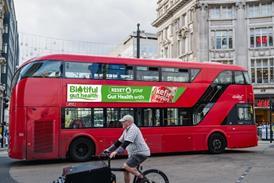














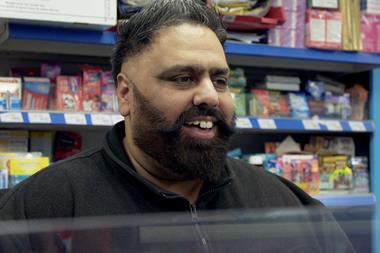
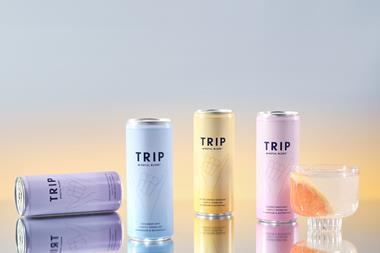
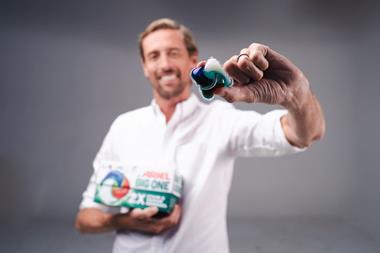


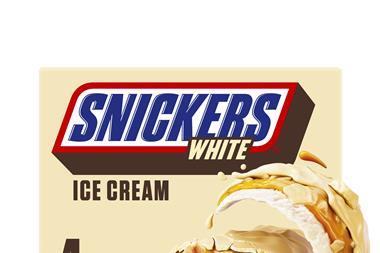

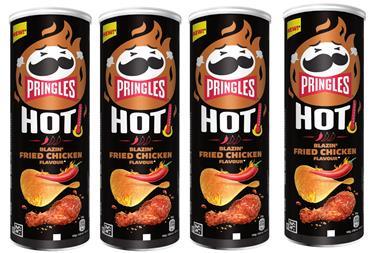
No comments yet